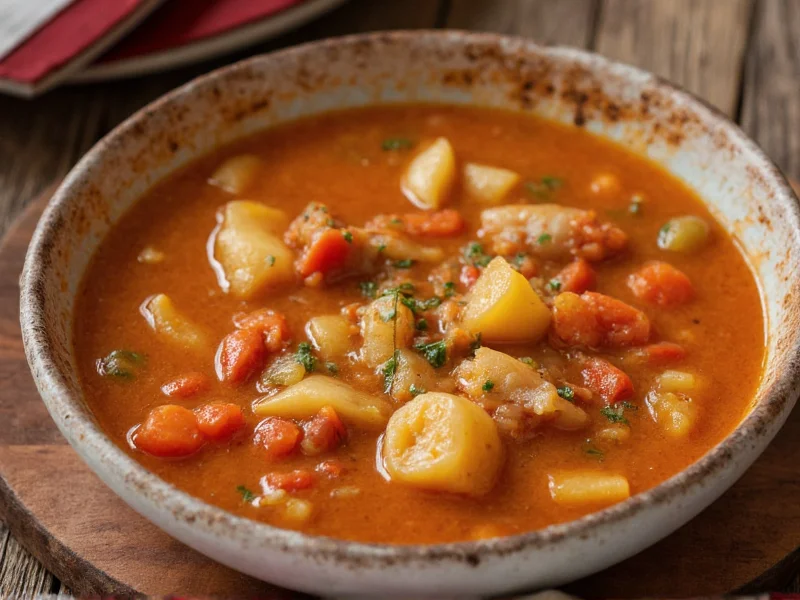Canning soup at home preserves seasonal flavors and creates convenient meal options, but requires strict adherence to food safety protocols. Unlike high-acid foods like tomatoes or fruits, most soups contain low-acid ingredients that create ideal conditions for Clostridium botulinum bacteria growth if not processed correctly. This comprehensive guide details safe, effective methods for preserving your homemade soups with professional-level results.
Essential Equipment for Safe Soup Canning
Successful soup canning begins with proper equipment. While some high-acid foods can use water bath canning, nearly all soups require a certified pressure canner due to their low-acid content. Key equipment includes:
- 15-21 quart pressure canner with dial or weighted gauge
- Regular-mouth or wide-mouth pint/quart jars with new lids
- Jar lifter, magnetic lid wand, and bubble remover
- Headspace measuring tool and non-metallic spatula
- Large stockpot for preheating jars
Understanding Soup Canning Safety Requirements
The primary danger in soup canning comes from C. botulinum, which produces a deadly neurotoxin in oxygen-free, low-acid environments. This bacteria spores survive boiling temperatures, making pressure canning essential for:
- Meat-based soups (chicken, beef, pork)
- Vegetable soups containing low-acid vegetables (carrots, corn, peas)
- Cream-based and pureed soups
- Any soup containing meat, poultry, or seafood
Water bath canning reaches only 212°F (100°C), insufficient to destroy botulism spores. Pressure canning achieves 240-250°F (116-121°C), the minimum temperature required for safety.
Step-by-Step Pressure Canning Process
Follow this verified procedure for safe soup preservation:
- Preheat jars in simmering water (180°F/82°C) to prevent breakage
- Prepare soup according to tested recipes, avoiding thickeners like flour or cornstarch
- Maintain proper headspace (1-1½ inches for soups) to allow for expansion
- Remove air bubbles with non-metallic tool before sealing
- Process at correct pressure based on altitude and jar size
- Cool jars undisturbed for 12-24 hours before checking seals
| Soup Type | Jar Size | Processing Time (minutes) | Pressure (PSI) |
|---|---|---|---|
| Clear broth soups | Pint | 20 | 10 (dial gauge) / 15 (weighted) |
| Vegetable soups | Quart | 25 | 11 (dial gauge) / 15 (weighted) |
| Meat/vegetable soups | Quart | 90 | 11 (dial gauge) / 15 (weighted) |
| Creamed soups | Quart | 100 | 11 (dial gauge) / 15 (weighted) |
Note: Adjust pressure for altitude - add 1 PSI for every 2,000 feet above sea level. Always follow current USDA guidelines for precise processing parameters.
Best Soup Types for Home Canning
Not all soups can be safely canned using home methods. Ideal candidates include:
- Clear broth-based soups with properly processed meat or vegetables
- Tomato-based soups with added acid (lemon juice or citric acid)
- Bean and legume soups with adequate processing time
Avoid canning:
- Cream of mushroom or other cream-based soups (unless using tested recipes)
- Soups with thickeners added before canning
- Pureed squash or pumpkin soups (unsafe without commercial equipment)
- Any soup containing pasta, rice, or other starches that expand during processing
Common Canning Mistakes and Solutions
Even experienced home canners make these critical errors:
- Mistake: Using water bath instead of pressure canning for low-acid soups
Solution: Always use pressure canning for meat, vegetable, and cream-based soups - Mistake: Ignoring headspace requirements
Solution: Maintain 1-1½ inches headspace to prevent siphoning and ensure proper seal - Mistake: Adding thickeners before processing
Solution: Thicken soups after opening jars, not before canning - Mistake: Reusing canning lids
Solution: Always use new, undamaged lids for each canning session
Storage and Shelf Life Guidelines
Properly canned soup maintains best quality for 12-18 months when stored correctly. Follow these storage protocols:
- Store in cool, dark place between 50-70°F (10-21°C)
- Remove metal bands after processing to prevent rust and allow seal monitoring
- Check seals before storage - lids should not flex when pressed
- Label jars with contents and date
- Use within one year for optimal flavor and nutrient retention
Before consuming, inspect for signs of spoilage: bulging lids, spurting liquid, unnatural colors, or off odors. When in doubt, throw it out - never taste potentially contaminated food.
Advanced Canning Tips for Perfect Results
Professional canners use these techniques for superior results:
- Pre-cook ingredients separately - process meats and vegetables individually before combining to ensure proper heat penetration
- Use low-sodium broths - add salt to taste after opening jars for better flavor control
- Leave soups slightly under-seasoned - flavors intensify during storage
- Freeze portions first - freeze soup in jar-shaped containers, then remove and fill with hot soup for perfect headspace
Frequently Asked Questions
Can I can soup without a pressure canner?
No, low-acid soups require pressure canning to reach temperatures sufficient to destroy botulism spores. Water bath canning does not achieve the necessary 240-250°F (116-121°C) and creates serious food safety risks for meat, vegetable, and cream-based soups.
How long does home canned soup last?
Properly canned and stored soup maintains best quality for 12-18 months. While not necessarily unsafe after this period, flavor, texture, and nutrient content degrade over time. Always inspect jars for spoilage signs before consumption, regardless of age.
Why can't I add pasta or rice to canned soup?
Pasta and rice expand during processing and storage, potentially breaking seals or causing jars to overflow. They also absorb liquid, creating dense pockets that prevent proper heat penetration during canning. Add these ingredients when reheating instead.











 浙公网安备
33010002000092号
浙公网安备
33010002000092号 浙B2-20120091-4
浙B2-20120091-4